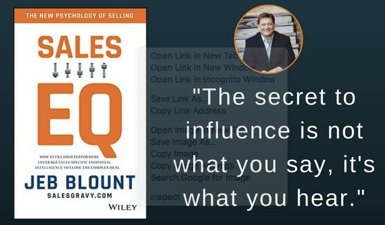 Even if you are not in “sales”, you’ve actually been in sales your whole life and you’ve had sales get stuck in the pipeline. No? You don’t think so. Well, let me provide a few examples to clarify.
Even if you are not in “sales”, you’ve actually been in sales your whole life and you’ve had sales get stuck in the pipeline. No? You don’t think so. Well, let me provide a few examples to clarify.
- When you were 5, you spent an entire 30 minutes of shopping time at the grocery store asking your mom to buy you the shiny toy, and after asking please 100 times, you worked down the “buyer” and you got the toy.
- When you were in high school, you wanted your own car and, after asking mom and dad 25 times, promising to do better in school, working part-time on weekends and getting all A’s and B’s on your report card, you finally drove your date to the prom in your own car.
- Let’s be candid on this next one – how many “attempts to close” before you had that first “intimate moment” with that person you are now engaged to/in love with/married to?
- Asking for the promotion
- Asking for a raise
- Asking to be transferred to another department
- Asking for a shot at being partner
Every one of these situations requires some “selling”, and in every situation, you had to make a case for why the outcome you desired was a good outcome. That, my friend, is the essence of selling. So, why do sales get stuck?
I’m working on an opportunity right now that has hit a snag. Coincidentally, at the suggestion of Dave Kurlan at Objective Management Group, I’m reading SALES EQ by Jeb Blount. Based on the 29 pages I’ve read so far, I think I’ve figured out why we - the stakeholders and I - are stuck.
SITUATION: The stakeholders were looking for a solution to a management problem. They, based on PEAR (Previous experiences/Education/expectations Appearing Real), had a vision of what that solution would and should look like – Sales Management Coaching.
WHY WE’RE STUCK:
- I succeeded in uncovering the emotional motivation for taking action, BUT I have also introduced additional factors they have to consider because these new factors help solve the root cause of the problem(s) they face.
- These additional factors have created cognitive dissonance for the stakeholders and they are now in a pattern of trying to reconcile 1)what they initially thought they needed with 2) this “shiny new object” (this new solution that makes sense to them but something they weren’t prepared to deal with from a functional or investment perspective).
- I failed to meet with one of the money decision makers. This isn’t always a problem, but in this case, I believe it is a problem because he has no emotional attachment to the “new” direction regarding the solution.
cog·ni·tive dis·so·nance noun PSYCHOLOGY
noun: cognitive dissonance 1.the state of having inconsistent thoughts, beliefs, or attitudes, especially as relating to behavioral decisions and attitude change.
3 Steps to Close More Deals More Quickly (To Keep Deals from Getting Stuck)
- You must create cognitive dissonance (show them the “shiny new object”). This is done when you can express a value proposition, a brand promise, a catalytic mechanism that sets you apart and keeps you from looking, sounding and acting like everyone else selling anything else.
- NOTE: This is important! Keep in mind that your prospects face lots of salespeople in lots of different aspects of their life. They’ve been inundated with sales pitches and so are numb to the same old same old.
- You must find a way to connect your pitch to their experience. Mitch Anthony and Scott West do a great job of helping sales professionals do this in their book – Story Selling for Financial Advisors
- NOTE: Don’t let the title fool you or discourage you. The principles of right brain selling work and make a difference in even the most left brain world like engineering and technology.
- You must “rehearse” their decision-making. What I mean by this is that, no matter what the situation…
- Go to committee
- Work with other trusted advisors
- Talk to partners
- Run it up the ladder
- Think it over
- Talk to spouse
The buyer(s) will go through a process of:
- Remembering their original intent and have difficulty reconciling that original direction with the new information/potential solution you help them discover.
- Then, assuming for a minute that your solution expanded their thinking and may require they expand their wallet, your prospect will start left brain thinking (logic). Depending on their finances, they may default to their original plan with someone else (they trust) simply because of the money involved.
- **NOTE: “Rehearsing them” simply means that you must take them through the process of their thinking. Ask them what they will do when someone on the committee challenges their thinking. What will they do when the current provider sharpens their pencil? How will they deal with a partner who doubts or challenges a solution that differs from the original objective(s)?
Additional resources:
- Why is Selling So %$#$ Hard? – Get the Free Book
- Inquire About Sales Scorecards – Call Mark Trinkle – 513.791.3458 or write: Mark@anthonycoletraining.com. Subject Line: Sales scorecard.
- Find out if your sales process is effective – Sales Process Grader


